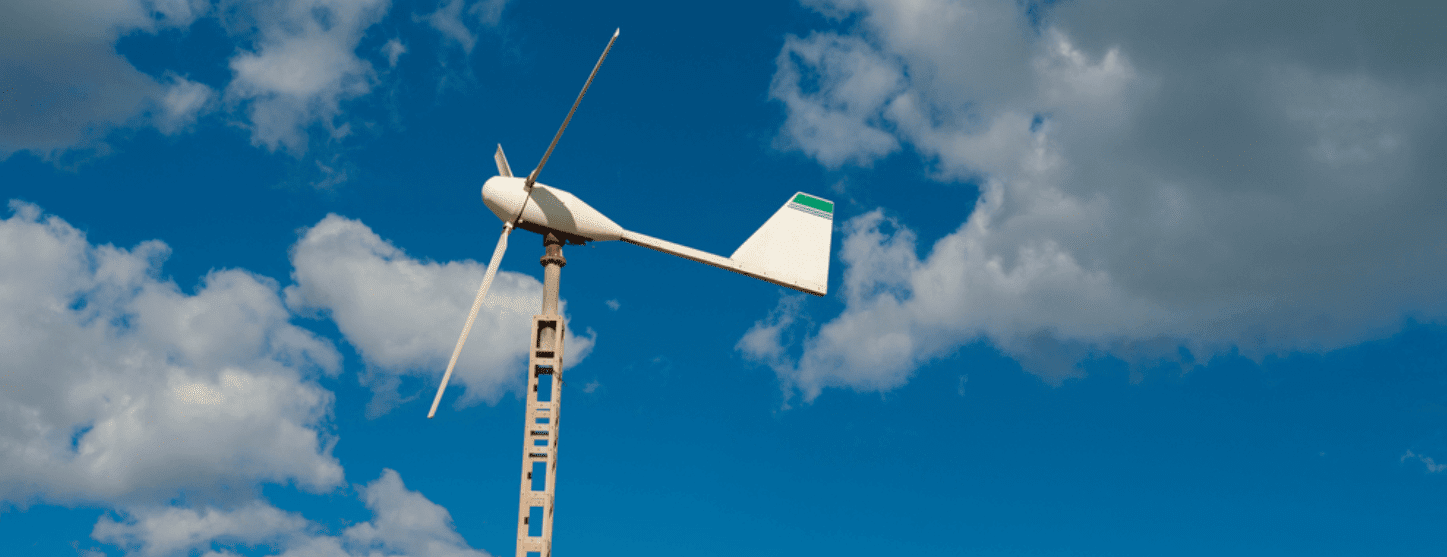
Wind turbines allow you to produce 100% clean, free electricity. For the majority of people living in suburban settings, wind doesn’t make as much sense as solar energy, but if your home is in an exposed windy area, and you can put up a decent sized turbine with a bit of elevation, it can be a really good option.
Different kinds of wind turbine
Wind turbines work by harness kinetic energy from the air and converting it into electricity using a generator. There are several different types of wind turbine, but all work by this general principle.
Battery-less grid tied systems:
Often considered to be the best kind of wind turbine, the battery-less grid tied systems are simple, environmentally friendly, and high performance. These turbines produce as much electricity as possible, also feeding in to the grid – this qualifies them for grants such as the Feed-in Tariff, so they’ve grown in popularity significantly in recent years. They’re great for anybody wishing to reduce reliance on energy companies, but not so good if you’re looking to go off-grid entirely. The problem is that there’s no storage for the energy, so when the wind stops blowing you’re back to buying energy from the grid.
Grid-tied system with battery backup:
The problem we mentioned above can be remedied by using a grid-tied turbine with battery storage. It’s the same premise, but with a bank of batteries that stores electricity and feeds it back in to the system if there is a grid power cut. The only downside is that the battery can contribute inefficiency.
Off-grid systems:
If you are hoping to limit your dependence on the mains as much as possible, you will need a larger turbine, or multiple smaller turbines – size matters. If you’re just looking to produce enough electricity for some garden lights then you’d be okay with a smaller one.
What are the wind speed requirements?
Check yourself before you wreck yourself! Your very first step should be to use The Carbon Trust website to get an estimated wind speed for your chosen location. Process some basic information and they’ll provide you with an average wind speed and potential energy output. You are looking for an average wind speed in excess of 5m/s.
What about planning permission?
If you live in England or Scotland, then certain wind turbines are permitted without planning permission, but they require adherence to strict conditions. However f you live in Wales or Northern Ireland you will require planning permission no matter what the type of system you are going for. As a method of practice it’s generally just a good idea to contact your local council to ask about planning permission if you’re considering installing a wind turbine. These days you’ll find that most local authorities encourage the installation of more renewable energy systems. If there are any objections it’s better to find out sooner rather than later.
For more on planning permission for wind turbines take a look at this guide over at The Green Age.
How much do they cost?
Cost is entirely dependent on the size of the wind turbine, ranging from £1k – £10k. Some of the smaller and most durable turbines are the SilentWind 420W Wind Turbine (from £1,350.00) and the Superwind 350W Wind Turbine (from £1,449.99). The SilentWind is handmade using laminated UV resistant Carbon Fibre Blades (CFK) and the highest quality components, meanwhile the Superwind is designed by experienced wind power engineers and blue water sailors especially for boats on the water.
Can I get government funding?
Good news! A wind turbine qualifies you for several different schemes. While different allowances are made depending on power output, a wind turbine gives you access to the Feed-in Tariff, helping you to recoup your initial spend. For bigger and more efficient wind turbines you may also be producing enough electricity for you to export back in to the grid, and if your turbine is above 5MW then it becomes eligible for the Renewable Obligation Certificates.
